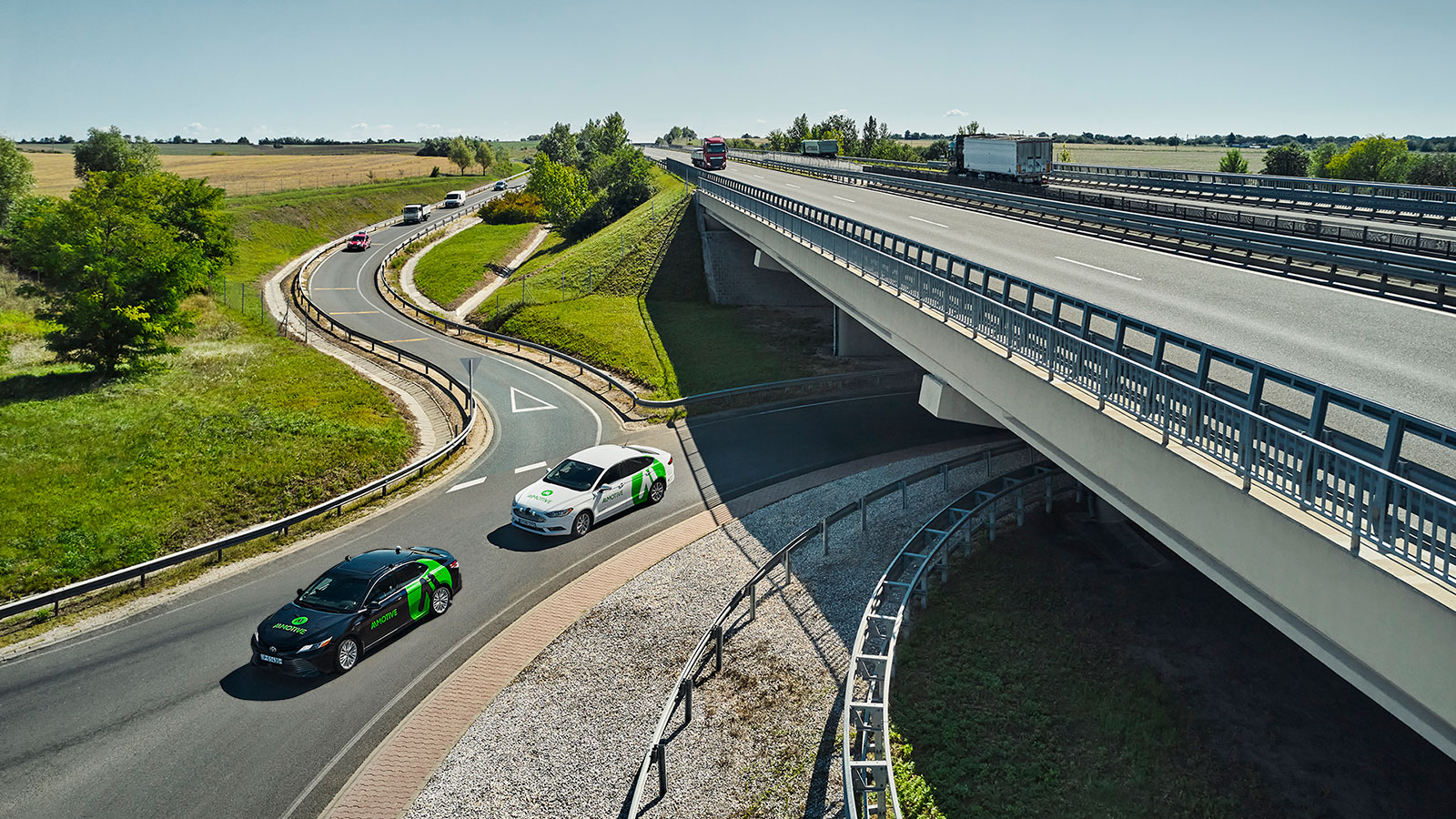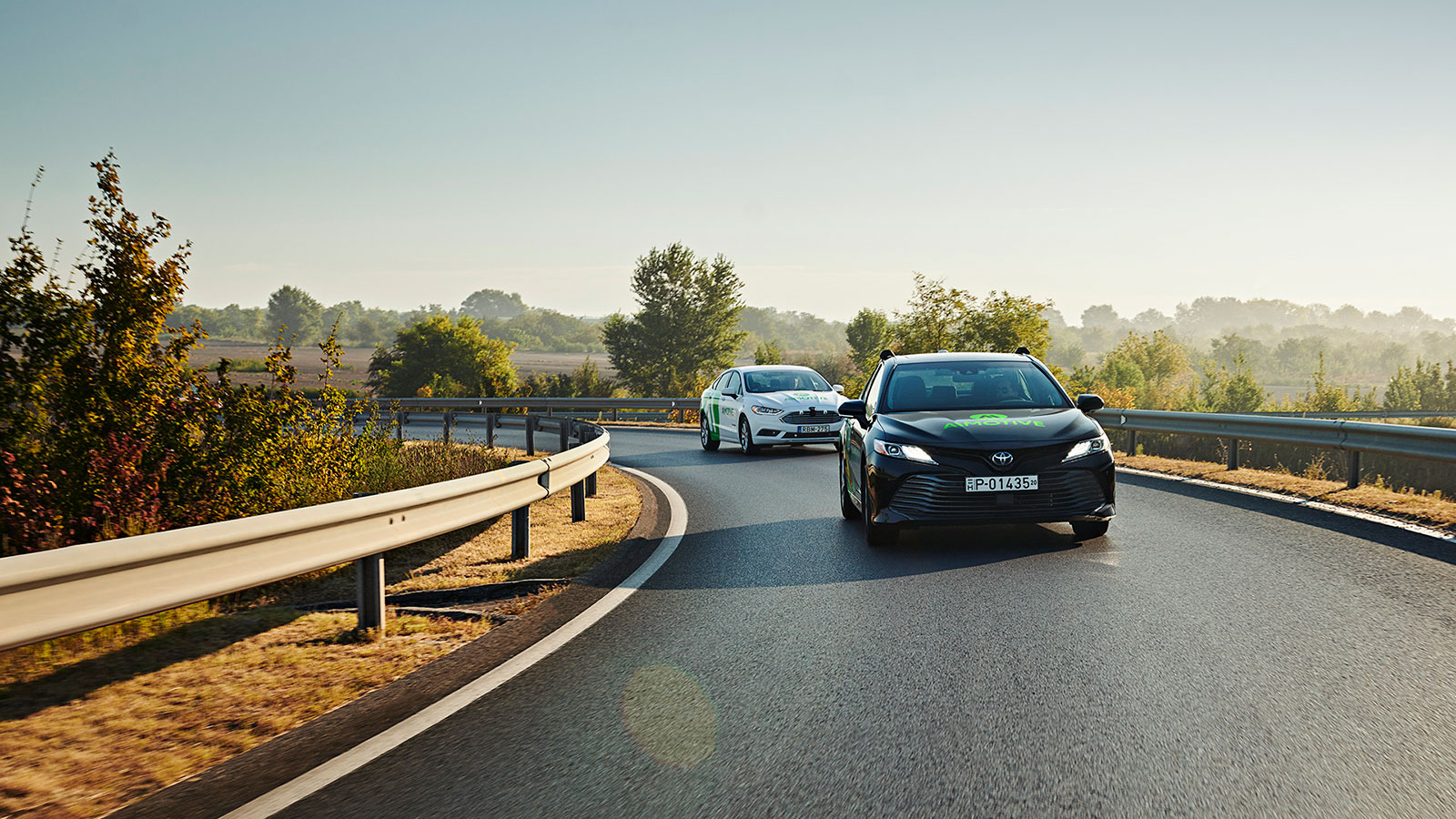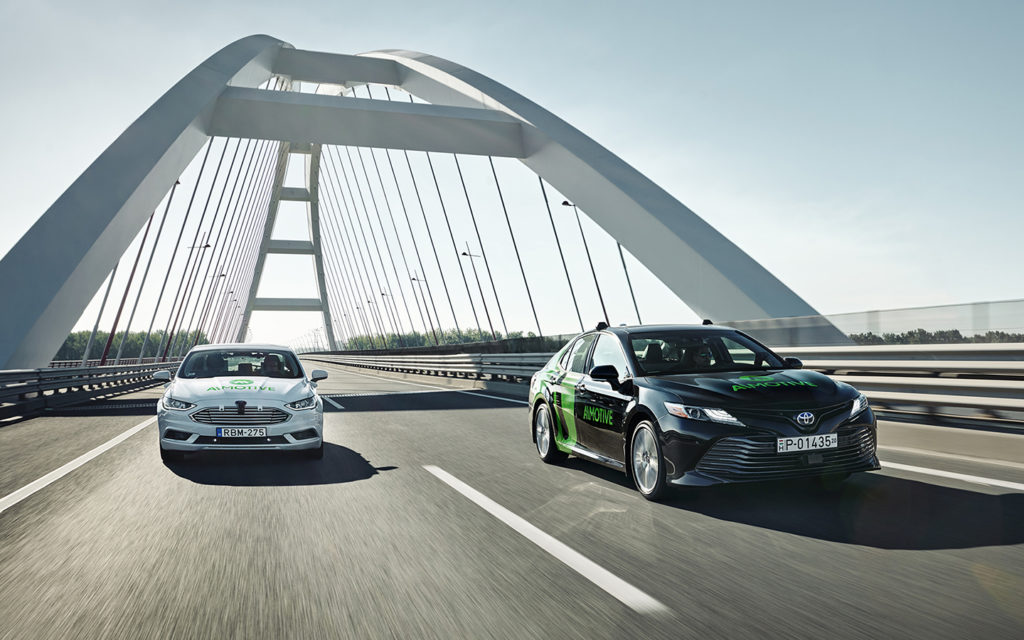This blog post was originally published at AImotive’s website. It is reprinted here with the permission of AImotive.
The AImotive Fleet has been an invaluable element of our work since day one, offering a real-world test platform, system-level know-how and time-to-market acceleration.
Looking at the AImotive Fleet, some may believe at first glance that AImotive is creating a retrofit automated driving system. This is not the case. All products created by AImotive must be integrated into a planned production vehicle by OEMs themselves. But then why do we have production cars running around the world emblazoned with a striking green logo? And why do we build these ourselves?
Testing, testing, testing
When the company first set out to create automated driving technology, our team faced the problem of how to test anything we developed. As AImotive had and has no plans to begin building vehicles itself, a two-pronged solution was chosen: large-scale testing would be handled in simulation, while a test fleet would be created to verify simulated tests, and better understand how our systems behave in the real world.
As with all young projects, the team’s first steps were small and cautious and focused on gaining control of a vehicle through existing drive-by-wire systems. Over the past five years, however, our know-how has developed drastically. Not in small part, thanks to the existence of our state-of-the-art workshop in the Budapest HQ. The area is equipped with all the tools our technicians need to complete any work on our cars, from mounting a single sensor to a full testing-focused retrofit. More importantly, they can do this in a way that meets the strict safety standards of automotive testing.

From the ground up
Over the years, our engineers and technicians have gained a system-level understanding of automated driving. While continuously cooperating with other industry stakeholders, it has always been essential for us to develop components and systems in-house, regardless of whether off-the-shelf components existed. This is one of the reasons why AImotive currently has one of the largest independent engineering teams in the world working on ADAS solutions. Since 2015 we have not only created a unique drive-by-wire system but one-of-a-kind ECU controllers.
This deep understanding of every part of the solution also allows our team to set up test vehicles to partner’s specifications, for example, to test various sensors setups and locations. Working directly with aiDrive software engineers who test various solutions in aiSim before real-world implementations, AImotive can provide its partners with information on how changes will affect the whole automated driving solution.

The created vehicle can then be used for data collection with the finalized sensor setup to provide training data for our AI researchers when creating the final solution, or can hit the road for real world self-driving tests at up-to 130 km/h. Our ability to quickly adapt aiDrive-based solutions to specific use-cases requested by our partners hinges on the strong cooperation between aiSim and the AImotive fleet. This gives us a considerable advantage, as understanding how different changes will affect the performance of a given solution allows us to more accurately estimate the time-to-market of automated driving solutions powered by AImotive technologies.
Our fleet is a tool
As highlighted above, our fleet is a tool. Building automated vehicles is not a service but a methodology that allows us to better support our development efforts and those of our partners than what a simple software provider could offer.
Similarly to aiSim or aiDrive, we have also put safety first in our fleet operations since its inception. As a result, all components, tools, and software in the vehicle have been integrated after rigorous testing, and when we are sure that they are reliable and safe.
Zsolt Geyer
Head of Vehicle Testing and Engineering, AImotive


